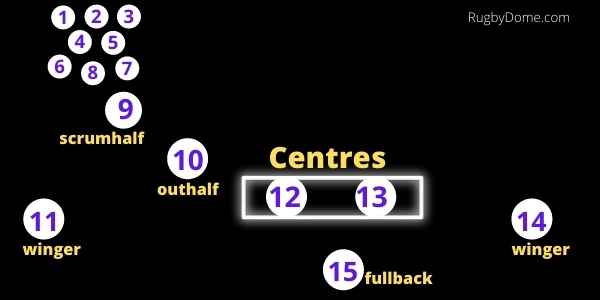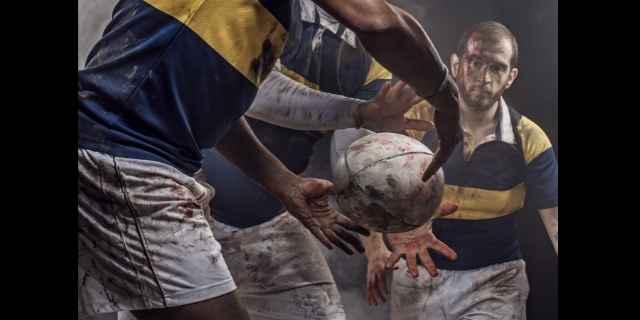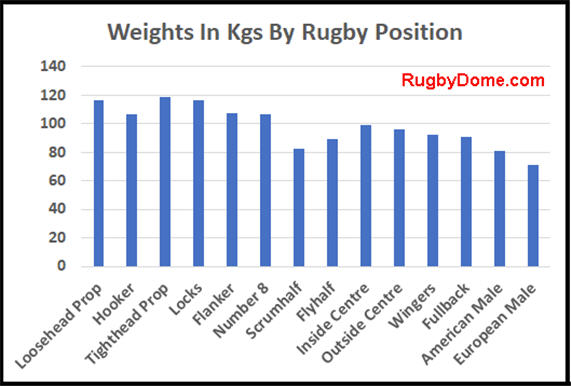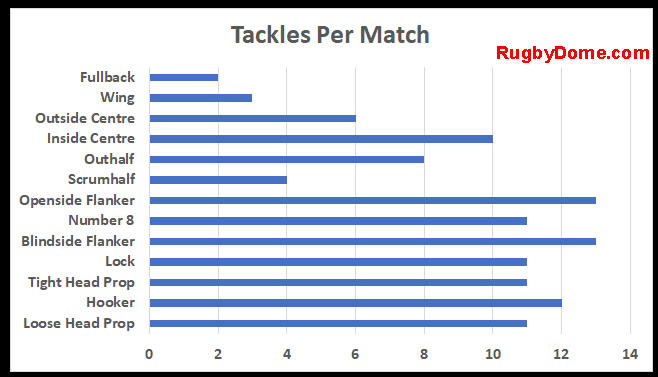There are two centres in the starting fifteen players on a rugby team. Their positions have different names in different parts of the world, but the numbers on their jerseys are the same everywhere.
This article role of the players wearing number 12 and number 13. These are often known as the inside and outside centre.
Centres In Rugby Union
We have a separate article on centres in sevens rugby. This article is about the 15-player game which is more widely known.
Why are centres called centres?
The two centres in rugby are traditionally positioned in the middle of the field between the outhalf and the wingers in open play.
The diagram below shows where the centres stand at the start of a scrum.
Numbers one to eight are packing down. The scrumhalf is at the back of the scrum, ready to pass the ball out to the outhalf.
The two centres stand side-by-side in the middle of the pitch i.e. in a central position between the ten and the wingers. This is how they get their name.

Why are they called “inside” and “outside” centre?
The centres are given different names based on their position in relation to the two half backs (the nine and ten).
The nearest centre, the number 12, is the inside centre. The outside centre stands outside the number 12.
What Do Centres Do In Attack?
Before we discuss the differences between the two centres, we’ll look at them as a pairing.
The centres are key to an attack flowing across the pitch in open play.
Passing and continuity

Centres must be able to pass well off both hands i.e. in both directions.
Our article on the types of passing in rugby describes over ten types of passes. Centres must master most of them.
That includes the pop-passes and offloads where one centre makes a short pass to the other centre or a backrow running through a gap.
Centres must also be able to make long accurate passes to a winger hugging a touchline.
Playmakers and ball-carriers
Traditionally, coaches favoured having two different types of centre on the pitch.
One would be a silky playmaker who could double up as the outhalf during attacking play. This centre is more likely to use a sidestep and pass to initiate line breaks and keep attacking moves flowing.
The playmaker was paired with a hard-running bosher who can truck up the ball into contact.
The ball-carrying centres are bigger and stronger players.
While a smaller centre may run laterally looking for a gap, the bigger players are expected to straighten up the play and carry the ball hard toward the opposition.
This strategy is still often used. Look for a centre pairing where one is noticeably bigger than the other.
The chart below shows the average weights of professional players in the elite tournaments in Europe. As you can see, inside centres are a little heavier than outside centres.
If you want the actual numbers, check out our article on average weights of players in rugby.

Why not have two big ball carriers as centres?
Some coaches prefer to pick two big players. But this loses a bit of subtlety and variety in open play.
It often leads to the attacking play getting condensed into the midfield and the ball seldom reaching the wings.
This means that the defence only needs to cope with a limited attack.
If the opposition has a decent defensive set-up, you’ll typically see the attacking team go through a high number of phases that don’t make much ground.
What about two playmaking centres?
Why not play two light-footed centres that are agile enough to sidestep through gaps and skilled enough to draw defenders and put other players through the gaps they create?
The problem there is that centres also play a crucial role in defence.
As centres must be able to deal with big carriers charging toward them, it’s rare to see two smaller players paired together.
What Do Inside Centres Do In Defence?
This graph shows the number of tackles made at each position in the 2021 Six Nations.

As you can see, the inside centre makes the highest number of tackles of all the backs. They average ten tackles per match, which is about four more than their outside centre.
Why does the twelve make so many centres? Well, they are the closest to the action off scrums and lineouts.
A typical attack off the set-piece will charge up the field at the centre and outhalf. As you can see from the graph, the number ten also makes more tackles than the outside centre.
Because the inside centre is often tackling hard-running flankers and number eights, larger centres usually play in the twelve shirt.
What Do Outside Centres Do In Defence?
The outside centre is often the best defender in the backline. This may seem surprising given that they make fewer tackles in total than the inside centre.
However, defending further out from the attacking play is more difficult to predict the next move.
The outside centre tries to prevent the attack from being spread further wide. You may see the outside centre shooting up to block the passing option from an opposing centre.
One of the reasons that outside centres make fewer tackles is that they’ve stifled the opposition’s attacking play.
However, the thirteen must also be able to tackle a player who cuts in to attack the gap between the two centres.
Other Positions
Our general overview of numbers and positions in rugby has links to in-depth articles for each playing position.
Frequently Asked Questions
Here are quick answers to common questions.
What number is the inside centre?
The inside centre wears number 12.
What number is the outside centre?
The outside centre wears number 13.
What is the second five-eighth?
In some regions, an inside centre is also called a second five-eighth. The second five-eighth still wears the number twelve jersey.
This terminology is commonly used in New Zealand.
If you’re wondering about the number thirteen, bear in mind that using the 2nd five-eighth term means there is only one “centre” on the field.
So, the outside centre is simply referred to as the centre.